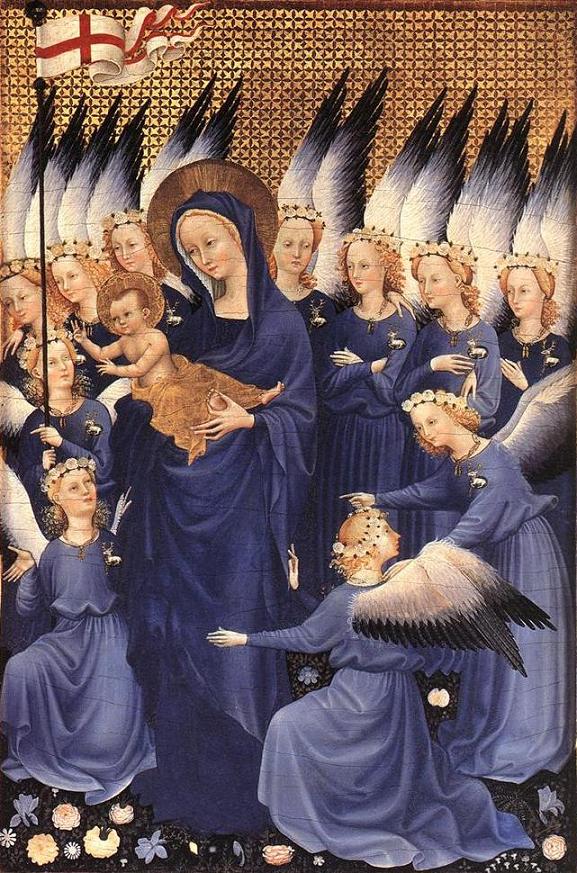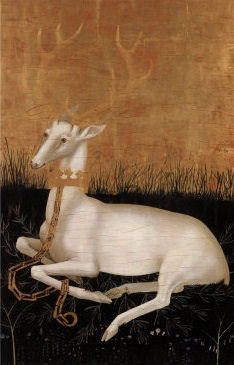
LIFE AS MYTH
![]()
JOURNAL
![]()
JOURNAL 2007
![]()
Following a white hart
Exploring myth & meaning
![]()
![]()
![]()
![]()
![]()
![]()
LIFEWORKS
![]()
ATLAS
![]()

The white hart of the Wilton Diptych was the representative image on my web site during 2007 In mythology the hart serves as spirit guide or divine messenger. In early Celtic mythology, for example, the appearance of a hart could indicate that the Otherworld was close at hand and that a mortal now stood on sacred grounds. In Arthurian legend, if one encountered a deer in the woods and followed its lead, then the individual immediately embarked on a great adventure.
We can look to the various myths as inspirational sources for our lives and as frameworks for meaning. Albert Camus said it best when he observed, "Myths are made for the imagination to breathe life into them." In other words, the myths are there as messengers and guides, but we must decide to engage, to breathe life into them, to follow the lure of a great adventure. My personal white hart myth includes both a life in the arts and, for the past ten years, a quest for the divine feminine. Looking back over the last decade, I can see how that particular framework for meaning has informed and shaped my life.
Very recently, while considering the panel above, the repeating hart motif caught my attention. Though it's possible that I have seen this painting before, I don't remember ever noticing the white hart. Art is full of mystery and points toward something just beyond words, just beyond our knowing. This image serves that function for me. It is a signpost, a perfect visual metaphor for my own private myth, the representation of the bridge between faith and creativity, myth and meaning.
Interior panel of Wilton Diptych. Egg tempura on oak panels. 1395. The National Gallery, London.
Verso.


